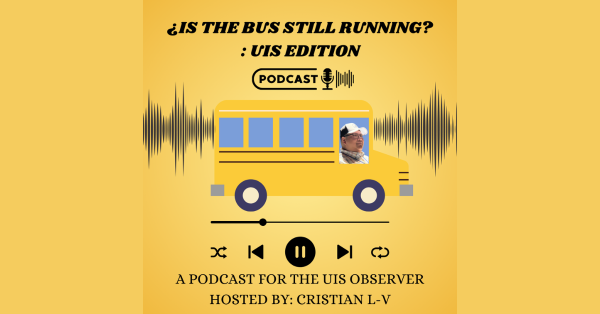The Displaced Persons Act of 1948: Local, National, and International Contexts
“Living memory is an important thing in history,” Sandy Baksys emphasized ardently during the ECCE Speaker Series event “The Displaced Persons Act of 1948: Local, National, and International Contexts.” She is a reporter, journalist, public relations consultant, writer, and president of the Lithuanian-American Club of Central Illinois, as well as the daughter of a displaced person. Three other educators, speakers, and facilitators of the panel discussion teamed up with her, including Chairman and Executive Director of the Lithuanian Research and Study Center Robert Vitas, Ph.D., US and Public History assistant UIS professor Devin Hunter, Ph.D., and associate UIS History professor Heather Bailey, Ph.D. They all shared their knowledge and insight in order to keep the memory alive on the 70th anniversary of the Displaced Persons Act of 1948, as well as any other historical, geographical, economic, or political information relevant to the issues of post-war devastation and forced immigration (particularly in Eastern Europe). This event was held on Tuesday Sept. 25, co-sponsored by Department of History, Lithuanian-American Club of Central Illinois, and the Illinois State Historical Society.
Initially, the audience was given an informative summary of many of the acts and events that impacted immigrants at the time, aside from the Displaced Persons Act. Some of the acts that were mentioned included the Magnuson Act of 1943, the Bracero program, and the Indian Relocation Act of 1952, which all added historical and political context to the discussion. The Displaced Persons Act was then outlined and expanded upon. Active on June 25, 1948, it placed a quota on the number of immigrants admitted into the United States for permanent residence and other purposes. By the end of World War II, there was immense demand for millions of displaced persons to relocate in an Allied region. Displaced persons were defined as people torn up by the war, such as refugees, former war prisoners, released slave laborers, concentration camp survivors, and orphans. In Europe they were often placed in makeshift Displaced Persons Camps for temporary respite, food, water, and shelter for those in need. The United States helped significantly to fund the construction and maintenance of these camps. Displaced persons were then typically moved to Allied countries, such as the United States and France, so that they could restart a new life away from the aftermath of the war. Organizations such as the United Nations Relief and Rehabilitation Administration (UNRRA), the International Refugee Organization, and the Displaced Persons Commission all aided in the rebuilding of a better life for the immigrants who qualified for their assistance.
After the more objective, analytical side of the Displaced Persons Act was explored by the speakers, a softer side emerged via the anecdotes of Sandy Baksys. She told the story of her family’s struggles with fleeing, as well as the adversity and stigma associated with displaced persons. Baksys forlornly added that sexual assaults by soldiers of the Red Army were an epidemic for any of the women trying to escape the wrath of the Soviets, no matter who they were. Rape was just one of the many horrors that displaced persons faced during their journey, alongside famine, pestilence, exhaustion, mental illnesses such as post-traumatic stress disorder, betrayal at the hands of selfish family members, isolation, unemployment, discrimination, and poverty. “The displaced persons didn’t talk about what happened to them,” Baksys explained. This, she said, was why it was so difficult to get a consolidated, clear view of their side of the story. Only through word of mouth, passed down in obscure bits and pieces, could friends and family members get a glimpse at what the war devastation was truly like.
Following this discussion, the panel was opened to members of the audience. A handful of those who shared their stories were family members of Lithuanian displaced persons, who had relocated to Illinois to seek a better life and find work. Communism, Stalin and Hitler, Lithuanian literature and film, and mining work for immigrants in Springfield were other topics discussed by both the audience and the panel of speakers during this time.
The memory of displaced persons following World War II is still alive and well, at least at UIS. The hope is that this knowledge will continue to spread for the generations to come. No struggle will be in vain, and no one will be forgotten.











